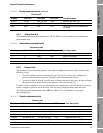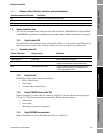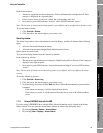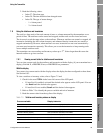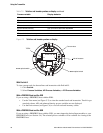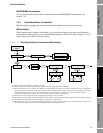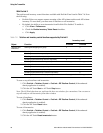
Configuration and Use Manual 41
Using the Transmitter
Required Configuration Optional ConfigurationUsing the TransmitterUsing a PROFIBUS Host
When the transmitter detects that the alarm condition has cleared:
• The first status flag is set to “inactive.”
• Digital communications fault action is deactivated (Fault alarms only).
• The “alarm inactive” record is written to alarm history (Fault and Informational alarms only).
• The second status flag is not changed.
Operator action is required to return the second status flag to “acknowledged.” Alarm
acknowledgment is optional. If the alarm is acknowledged, the “alarm acknowledged” record is
written to alarm history.
7.7.1 Using the display
The display shows information only about active Fault or Informational alarms, based on alarm status
bits. Ignore alarms are filtered out, and you cannot access alarm history via the display.
To view or acknowledge alarms using the display menus, see the flowchart in Figure 7-1.
If the transmitter does not have a display, or if operator access to the alarm menu is disabled (see
Section 8.9.5), alarms can be viewed and acknowledged using ProLink II, a PROFIBUS host with the
EDD, or PROFIBUS bus parameters. Alarm acknowledgment is optional.
Additionally, the display may be configured to enable or disable the Ack All function. If disabled, the
Ack All screen is not displayed and alarms must be acknowledged individually.



